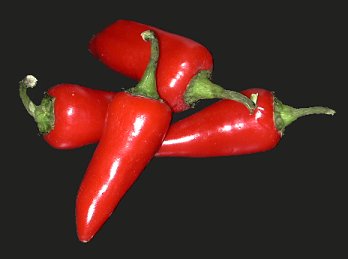<>


Mexican and Southwestern foods have a well-deserved reputation for hotness, often to the shock of northerners encountering it for the first time. Indeed, one newspaper food reviewer, probably from New York, wrote of the tonsil-searing salsa supplied by a popular fast-food chain—a salsa judged by most Southwesterners as of medium warmness. Be that as it may, why, in a hot climate, are foods that are guaranteed to make you break out in a sweat so widespread? For it's not only the Chihuahuan Desert cuisine that sizzles, but that of tropical climates worldwide.
One hypothesis is based on the correlations between tropical climates,
the tendency of foods to spoil quickly in heat, and hot foods. Spices and plant
products hot enough to set every heat sensor in the mouth screaming apparently contain
useful antioxidants and even anti-bacterial properties. In times before refrigeration,
every advantage against food poisoning was not only desirable, but necessary. Over the
millennia, then, people have not only learned to eat these protective substances, but
to enjoy what outlanders consider torture.
<> 
Contributor: Arthur H. Harris, Laboratory for Environmental Biology, Centennial Museum, University of Texas at El Paso.
Desert Diary is a joint production of the Centennial Museum and KTEP National Public Radio at the University of Texas at El Paso.

Jalapeño peppers, one of the foods that adds spice to life in the Chihuahuan Desert.